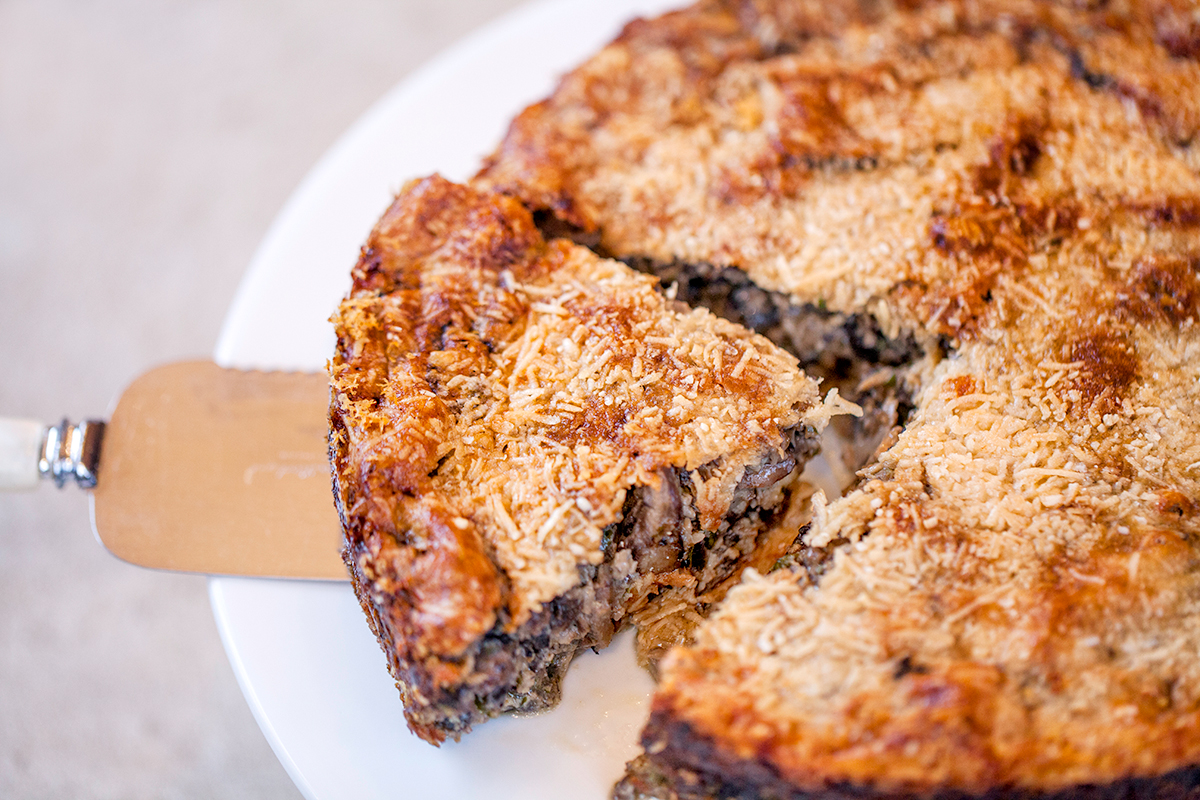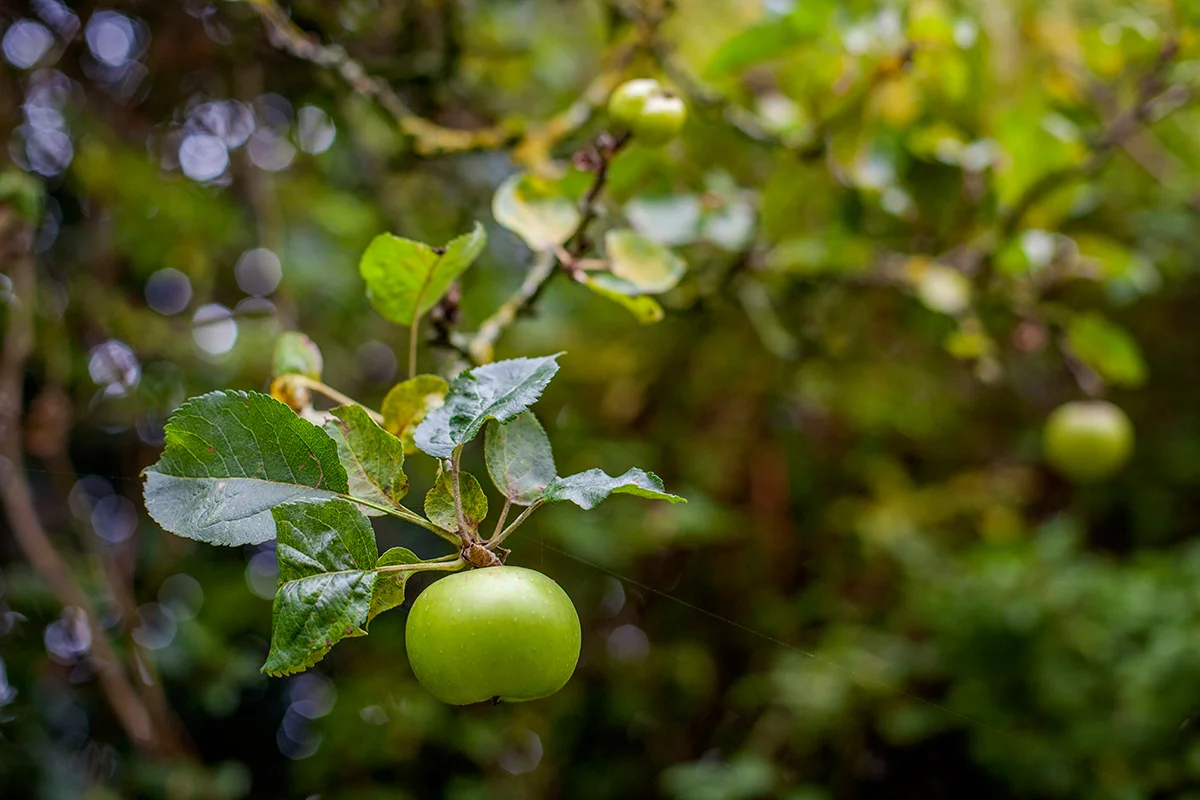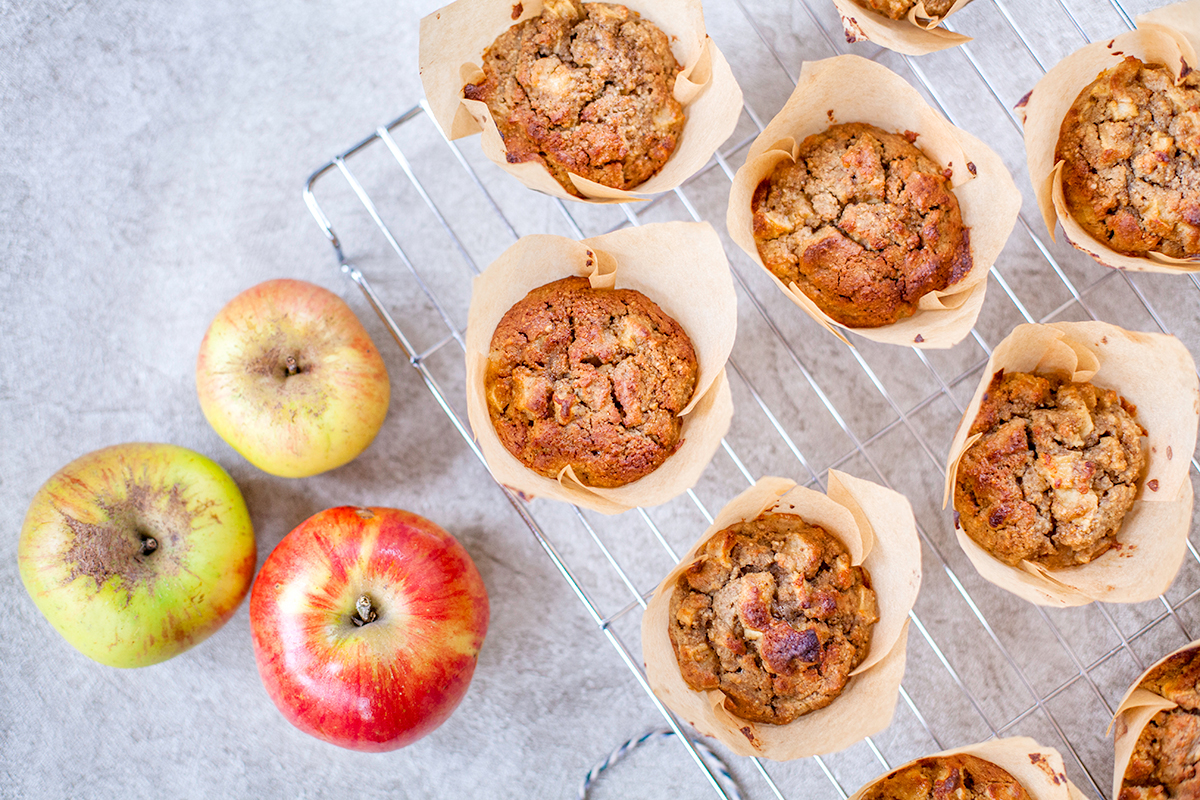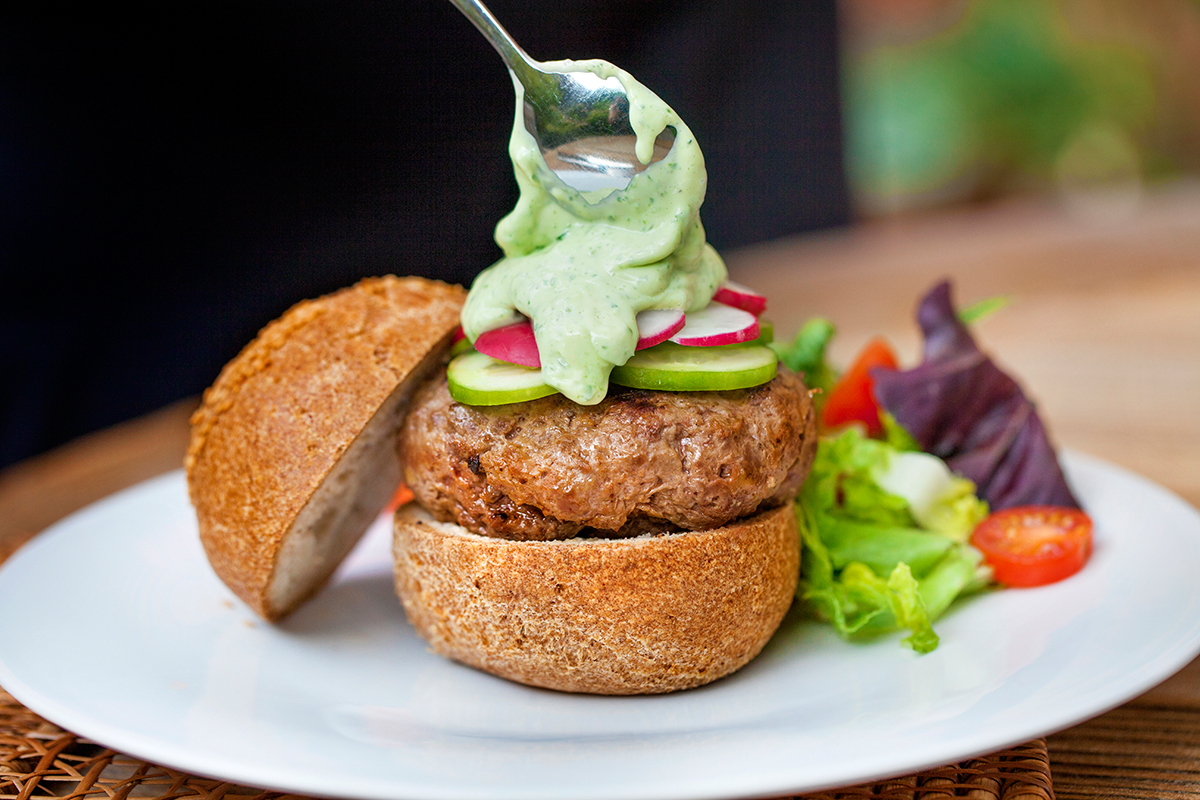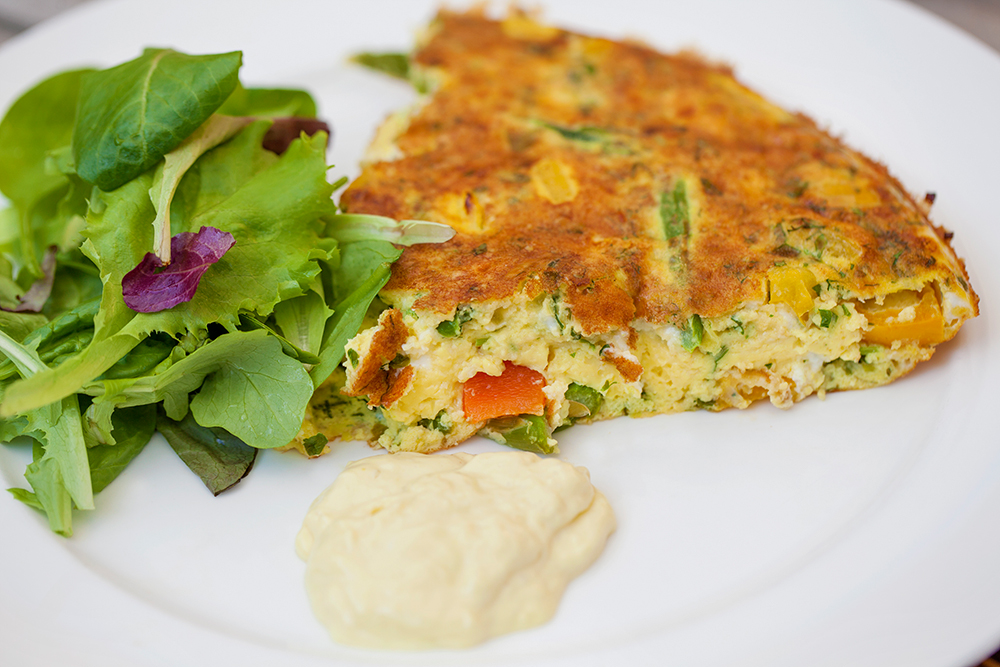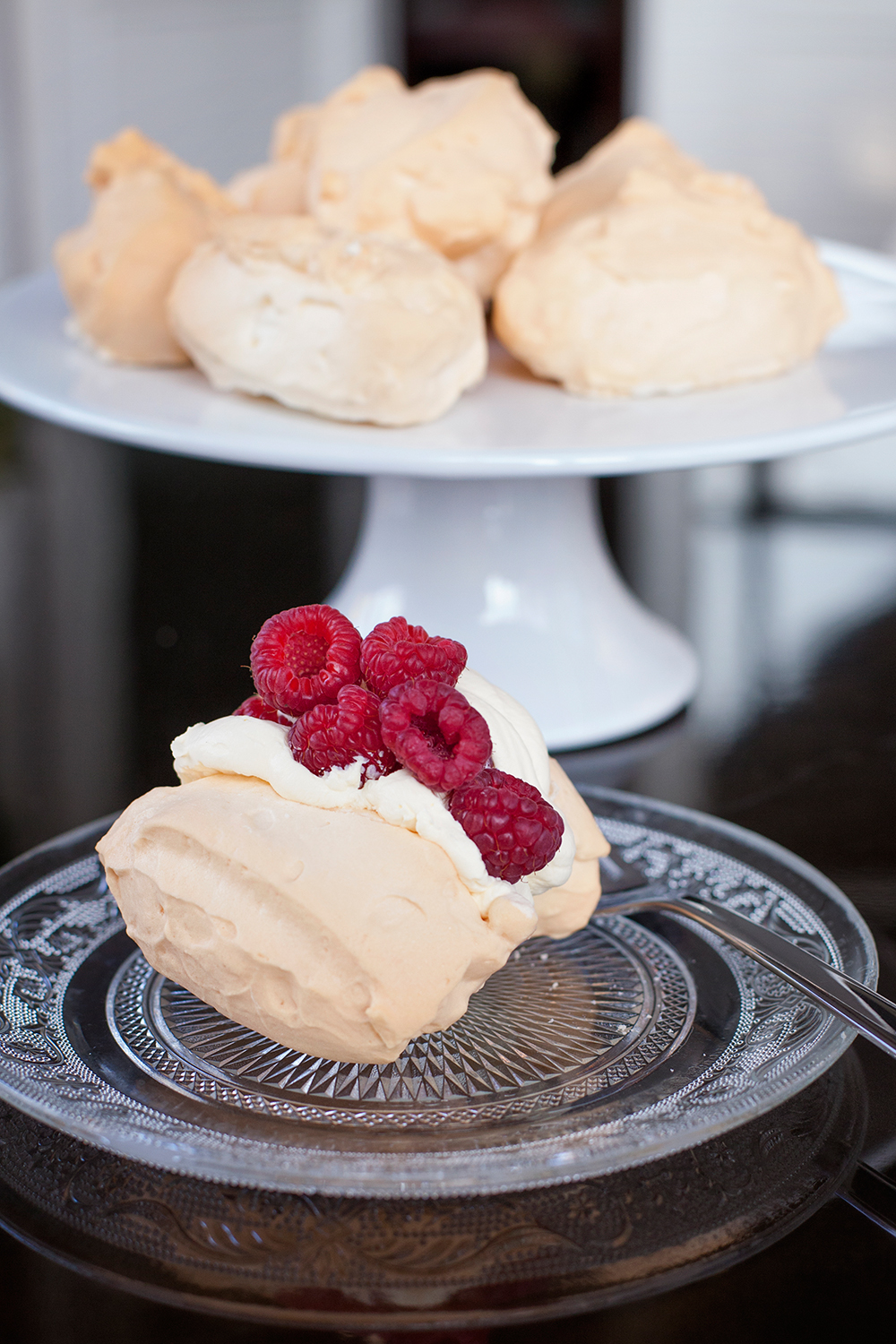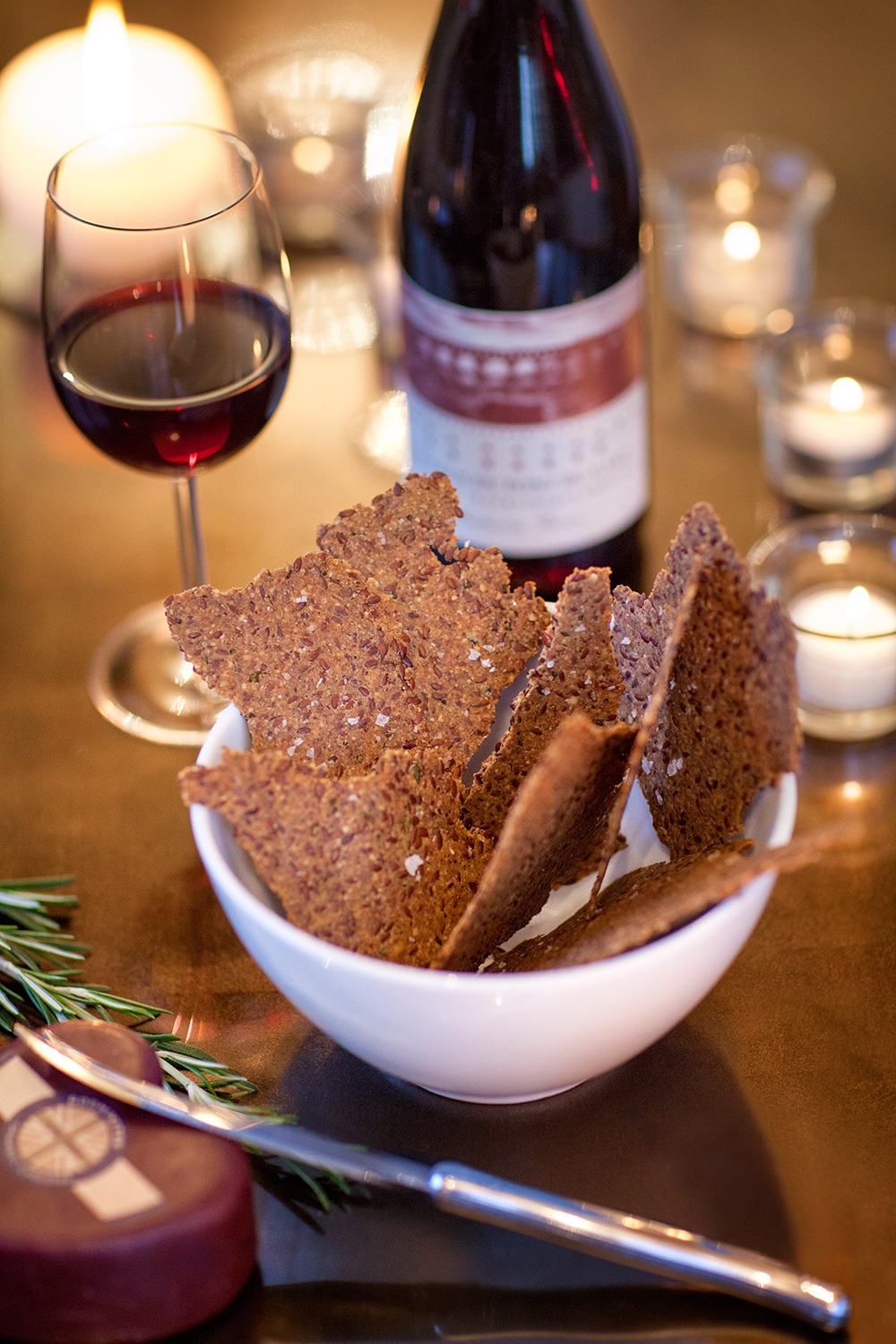With the winter festivities over, I’m maxed out on animal protein.
As delicious as our low-carb, festive feasting was, which included a side of organic salmon, a saddle of wild venison and a Riverford XXL chicken the size of a small turkey (too much already!), in my opinion, the best meal to grace our table was this vegetarian Wild Mushroom Torte.
I know, I know. I should’ve posted this recipe before now, but in the final week before Christmas I suddenly realised that the foraged wild mushrooms that Abel & Cole thoughtfully supplied throughout the autumn months, were no longer available. Nevertheless, after all my careful menu planning, I wasn’t about to change my mind about having a Wild Mushroom Torte for Boxing Day lunch.
With just five delivery days left until Christmas Eve, I tracked down the brilliant Wild About Mushrooms, ordered some dried morels and chanterelles and kept my fingers crossed that they’d arrive in time. They did. Furthermore, when they were reconstituted their wild mushroom ‘perfume’ was just as, if not more fragrant than, fresh wild mushrooms.
Combining wild mushrooms for their perfume and concentrated flavour and cultivated mushrooms for texture (any type of mushroom that you fancy, and your purse will allow) makes this Wild Mushroom Torte the most delicious-tasting, vegetarian main course you can imagine. I served mine with lime-glazed parsnips, curly kale and a gravy enriched with the broth from the rehydrated mushrooms and it was divine!
Whilst my fellow diners and I are a sample size of just three people, for what it’s worth, we all feel significantly better - lighter in body and mind - when our meals are low-carb, high-fat and centred around a plateful of vegetables.
You wouldn’t guess this from the OTT seasonal animal protein extravaganza listed above, but my love for animals means I regret having to eat them at all. I choose to do so because clearly humans are genetically programmed for optimal functioning from a diet that includes meat.
When ancient humans first created the tools and developed the skill to hunt down some carefully selected prey - antelope, wildebeest, bison - our species, hungry for a dense, protein-rich source of energy, got a taste for meat. To our half-starved ancestors, the sight of a large animal being dragged back to camp for the benefit of the tribe would signal a time to ‘party’ and gorge themselves silly on meat. But this wasn’t a daily occurrence. Afterwards, they would not eat any protein again until the next kill…which could be days, weeks, or months.
Unfortunately, without taking a much needed rest from consuming protein, most Primal/Paleo fans who favour eating unlimited amounts of pastured meat because, to their mind, it’s the real ancestral deal, may find that their diet won’t cut it for long-term health. Eating way too much protein, particularly animal protein, is no better, and in fact, potentially worse than eating pasta and bread regularly.
The same applies to people on a ketogenic diet, who believe that all they have to do to lose weight is cut the carbs and replace them with massive amounts of cheese, eggs, butter, bacon and fatty cuts of beef, pork and lamb. An excess of protein in the diet contributes to excess calories.
Surplus protein morphs into sugar inside the body and raises insulin levels. Insulin is the fat depositing hormone that ushers excess blood sugar into your fat cells for future storage and voilà, you start to gain weight.
Not too much difference between that and a diet filled with bread, pasta, potatoes and rice!
It’s almost a universal problem for those of us unwilling to eschew all animal protein for a plate of carb-laden grains, potatoes, beans and legumes (did you know that 46% of the world’s diabetics live in India, where many Hindus avoid meat?) that we inevitably end up eating far more meat than is good for us.
Since it is too tedious and stressful for me to try and work out a daily macronutrient dietary analysis of the delicious Primal foods my family eats, my rather lenient-minded cook’s solution is to encourage us all to engage in 16-20 hours of intermittent fasting every day, to eat relatively small amounts of meat or fish two or three times weekly and, for the rest of the time, make sure all our meals centre around high fat with lots of colourful, high-fibre plant-based elements rather than the usual carbohydrate or protein heavy meals that most people depend on.
I’ve not yet mentioned that if the meat you’re eating isn’t organic and the animal it came from was grain-fed, which all cheap meat raised in commercial feeding lots is, then you are actually eating the same grains and/or soy beans that the animal ate when it was alive. Furthermore, these cereals most likely came from GM crops grown with Glyphosate and other mad, man-made, toxic chemicals. You need to know there is such a thing as Glyphosate Induced Obesity, which applies to everyone who continues to eat ‘cheap’ highly processed and chemically laden food, whether it be fruits, vegetables, grains, legumes vegetable seed oils or from animals born and bred on a cocktail of chemicals.
A further disturbing reason to avoid red meat, or at least eat significantly less of it, is that the flesh of cattle, pigs and sheep contains a sugar molecule called Neu5Gc, which, unlike most other mammals, humans cannot synthesise. A shout out here for Dr. Gundry’s book ‘The Plant Paradox’ (and my sister Wendy, who gifted me this brilliant, informative read!). According to Dr, Gundry, every time humans eat the flesh of beef, pork and lamb - grass fed or not - it triggers an immune response that can cause chronic inflammation, which is a known contributor to cancer, diabetes and heart disease. All things taken into consideration, eating too much meat is not just unhealthy, it’s really unhealthy.
Now I know we’d all be better off eating less meat, I shall be re-focusing my efforts on finding more nutrient-rich, plant-based, ketogenic recipes to share with you on this blog. These won’t include much fruit. Because whilst there’s an ongoing debate about whether or not an excess of protein kicks you out of ketosis, it has to be said that fructose - the copious amounts of fruit sugar contained in apples, bananas, grapes, pears and especially the exotic fruits you've been told are “healthy” - most certainly will.
When I first started writing this blog, it was a massive overdose of multiple fruit and vegetable smoothies that put my immune system on red-alert, causing acute systemic inflammation and a skin rash that wouldn’t go away. Subsequently, I thought I’d sussed out the perfect anti-inflammatory diet, until my last birthday, when a celebratory meal at a restaurant caused me to have another severe allergic reaction. It’s taken four months of paying close attention to my gut health, noticing how my body responds to different foods and implementing more elegant lifestyle choices (less wine; more sleep!) to repair the damage that I can directly attribute to just one savoury meal.
Whenever you eat food prepared by someone that’s not on your dietary wavelength, e.g. profit-led restaurants and high street food chains, you’re vulnerable. My recent experience told me that even a single meal can push you towards metabolic mayhem, which if repeated often enough, can lead to diseases such as obesity, atherosclerosis and type 2 diabetes. Staying-in to eat together seems a much nicer way to have fun!
If you’re planning to make 2019 the year you take back control of your health by opting for a life-enhancing diet that quickly burns-off excess body fat, reverses the symptoms of chronic disease and helps you to stay slim, strong and fit forever (well, almost forever!) please subscribe to Primal Plate’s blog for delicious, inspirational recipes and the latest nutritional research that will show you the why, when and what foods to eat to achieve your goal.
In the meantime, the best food-related new year’s resolution you can make is to eat real food. Essentially, this means you, someone you love or someone you’re willing to pay, cooks for you at home.
Start with the joy of cooking this Wild Mushroom Torte, which is a slightly modified version of Annie Bell’s recipe in Gorgeous Greens. Preparing the mushrooms takes quite a bit of time, but you’ll find the end result so very tasty and worthy of the effort that you may never want to eat restaurant food again!
Wild Mushroom Torte (serves 4-6)
Ingredients
50g organic butter
4 tablespoons organic extra virgin olive oil
160g organic Parmesan, finely grated
3 organic shallots, peeled and finely chopped
800g mixture of wild and organic cultivated mushrooms, trimmed and finely sliced
Himalayan Pink salt (or use sea salt)
Organic black pepper, freshly ground
150ml organic double cream
3 tbsp organic fresh curly-leaved parsley, finely chopped
a generous pinch of organic nutmeg, freshly grated
2 large organic eggs, plus 1 large egg yolk, lightly beaten together to combine
Instructions
Liberally butter a 20 x 7 cm spring form cake tin, line the base with a circle of non-stick paper, butter the paper and dust the tin all over with some of the grated Parmesan.
Pre-heat the oven to 190℃ fan/210℃ / 400℉ / Gas mark 6.
You will need to cook the mushrooms in about 4 batches as follows:
Heat ¼ of the remaining butter with 1 tablespoon of olive oil in a large frying pan until hot and foaming, add the shallots to the pan and fry until softened but not browned.
Add your first ¼ of mushrooms to the pan, stir to combine with the oil and shallots, then continue to fry, stirring from time to time, until the mushrooms have softened and the mixture is starting to colour. Tip: When you add the mushrooms to the pan, leave them alone for the first 45-60 seconds to allow them to slightly caramelise on the base of the pan before moving them around.
When the first batch of mushrooms are almost ready, season with salt and pepper and then tip into a large mixing bowl.
Re-heat the frying pan with a ⅓ of the remaining butter and another tablespoon of olive oil before adding your second batch of mushrooms and cooking them in the same way.
Repeat with remainder of the mushrooms.
When all the mushrooms are cooked, transfer half of them into the bowl of a food processor and pulse to a textured puree. Combine this puree with the rest of the mushrooms.
Stir in the cream, parsley, eggs and half the remaining Parmesan. Add the grated nutmeg and some seasoning to taste.
Tip the mixture into the prepared tin, levelling it out on top. Scatter the remaining Parmesan over evenly and bake for 35-40 minutes until golden on the surface and set.
Allow the torte to rest for 10-15 minutes before running a knife around the sides of the pan and removing its collar.
Serve in wedges.
Notes:
About 30g of dried mushrooms equates to 100g of fresh when they’re rehydrated. I use approximately 25% of wild mushrooms to 75% of cultivated for this recipe.
Strict vegetarians cannot eat Parmesan Reggiano but can use this Italian Parmesan-style vegetarian cheese instead.
To get ahead, pre-prepare the cake tin and the ingredients up to, and including, cooking and pureeing the mushrooms. When you’re ready to bake the torte, just combine the mushrooms with the rest of the ingredients before proceeding with rest of the recipe.
The cooked torte keeps well in a refrigerator for several days. I think the best way to use up leftovers is to loosely wrap remaining slices of torte in tin foil before re-heating in a moderately hot oven (approx. 195℃) for 15 minutes. Served hot with a couple of crispy-bottomed fried eggs is pure keto indulgence!
Fat 61g Protein 26g Carbohydrate 4g - per serving
